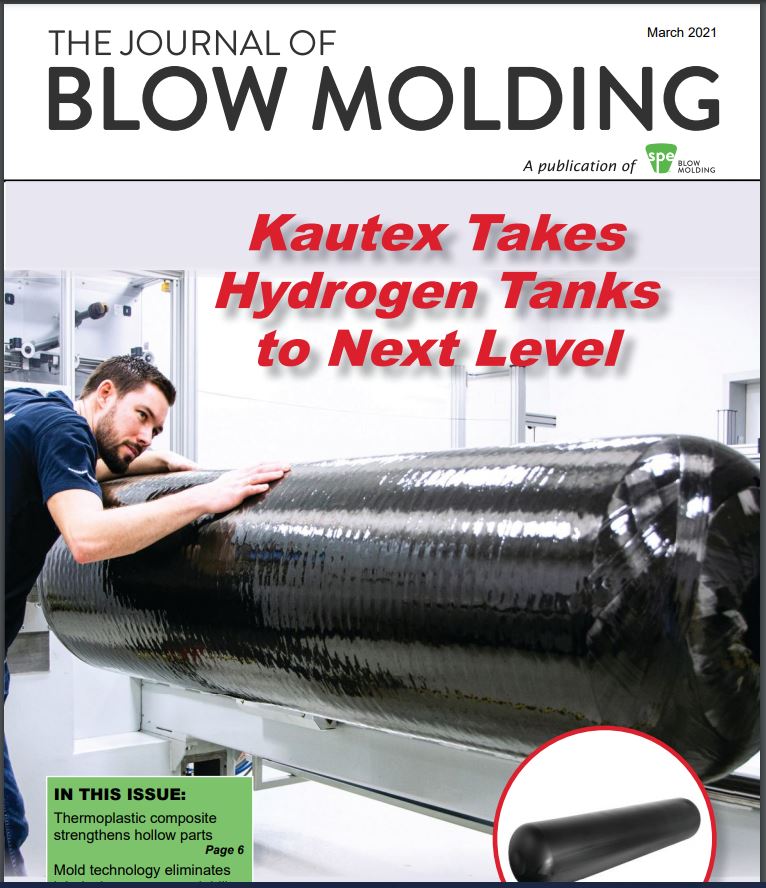Luna Terahertz Sensors and Gauges Provide Blow Molding and Other Process Control Insights

Process control is crucial to the production of a high-quality product. THz sensors are a relatively new technology that provide ultra fast, accurate and highly precise measurements of thickness in multilayer blow molded products. THz's ability to measure a wide range of materials, including those opaque to ultraviolet, visible and infrared light, provides a unique control capability. THz’s capabilities over a wide range of points in the blow molding product development, manufacturing and quality-control processes make THz wall thickness measurements an incredibly useful technology.
How does a THz measurement system work?
THz sensors emit a very narrow pulse of completely safe energy. This pulse travels through air to the sample and generates reflections of the pulse at every interface between two materials (including air and the sample's outer surfaces). If the sample is multilayer, interior layers will also create reflections, which provide a measurement of the interior layers. The THz system measures the time between the two reflections off the top and bottom of a layer and uses this value to calculate layer thickness. Thickness measurements are highly precise (typically less than plus or minus 0.1 mil or 2.5 microns for in-line measurement rates) and extremely repeatable. The systems have high resolution (less than 0.04 mil or 1 micron) and can be used in many challenging environmental conditions.
What comprises a THz system?
A THz system consists of a control unit, a flexible umbilical cable (up to about 147 feet long) and a sensor. Single-sensor and dual-sensor control units are available. The umbilical cable allows the sensor to be freely positioned for alignment with the object being examined.
Applications for THz technologies
Applications that have been validated using THz systems include measuring blow-molded fuel tanks and bottles.
Fuel Tanks
In Figure 1, a THz sensor can be seen at the end of the robot arm used to take measurements on a barrier-layer automotive fuel tank. The robot measured seven positions on the tank 88 times over one hour. Over this period, the ambient temperature of the plant increased from 70 degrees Fahrenheit to 105 degrees. The total thickness across the multiple points varied from 5mm to 8mm, with an average value of 6.29mm and an average standard deviation for repeated measurements of 0.0007mm. The individual layer thicknesses were also measured, with an average standard deviation of 0.0016mm.
Parisons and Bottles
Another use is measuring the thickness of a multilayer parison just before it is clamped in the mold. Such information can be used to assist development and manufacturing, and to measure the phasing of the extrusion process to get better control and distribution of the wall thickness throughout the object. This will lead to faster development and startup, more consistent wall-thickness distribution and efficient use of material and energy.
Luna's THz gauges and sensors have successfully measured barrier layers of ethylene vinyl alcohol, nylon and carbon black. In one example, the system took as many as four different measurements as barrier-layer bottles moved past on a conveyor over a period of nearly four hours. A sensor installed in front of a conveyor produced in-line point measurements. This type of real-time data can provide immediate feedback to identify and correct manufacturing problems quickly.
In one case, over a measurement run of 86 hours, the barrier layer was measured with a standard deviation of plus or minus 1.5 microns, demonstrating the stability and high precision of the measurement, giving bottle manufacturers more control.
Luna’s non-contact terahertz sensors have demonstrated the ability to measure wall thickness of nearly all blow molded products, including multilayer products, at very high rates with high accuracy and precision, at many locations in the blow molding process. From the extruded parison or preform to the molded fuel tank or bottle, THz sensors can provide a high-precision measurement of multiple layers, regardless of color or material.
To read the entire article by Dr. Irl Duling, director of terahertz business development; and Dr. Jeffrey White, senior research scientist at Luna Innovations Inc, visit the March 2021 issue of The Journal of Blow Molding.
See the full suite of Luna Terahertz solutions for process control and non-destructive test (NDT) here and the Terahertz products for gauging and imaging here.